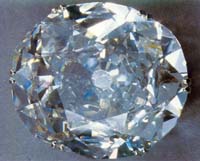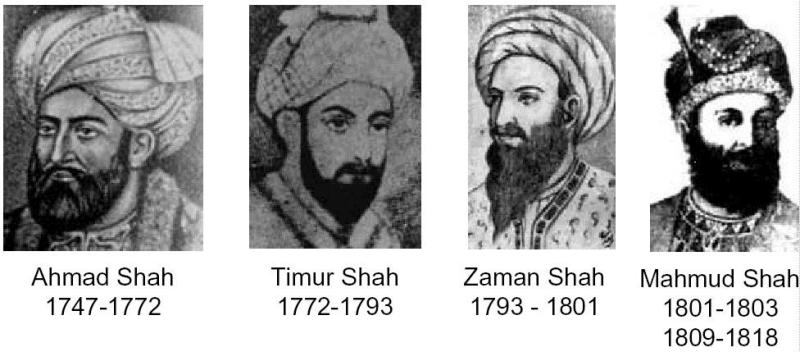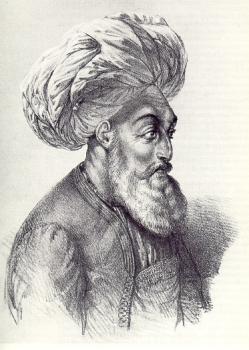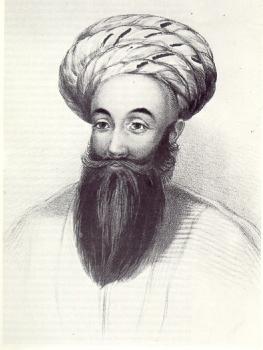 The REAL
history of the Koh-i-Noor Diamond
The REAL
history of the Koh-i-Noor Diamond  The REAL
history of the Koh-i-Noor Diamond
The REAL
history of the Koh-i-Noor Diamond
By Syed. Sher Shah,
as narrated by his father Syed. Zaman Shah, Research Historian in Moghul History.
Background: Articles have recently appeared in the world press wherein different parties are making ludicrous claims that the Koh-i-Noor diamond is their legacy and should be returned to them. The Koh-i-Noor diamond is presently the property of H.M. The Queen Mother and is kept in the Tower of London with the Crown Jewels.
The event that sparked off these ludicrous claims for the Koh-i-Noor diamond was that U.K. Prime Minister Tony Blair reportedly had set up a committee to consider the possible return of the Elgin Marbles to Greece.
By Deepshikha Ghosh, India Abroad News Service
New
Delhi, May 14 - Well-known journalist and lawmaker Kuldip Nayar says the Indian government
must make an all out effort to get the prestigious "Kohinoor" diamond back from
Britain.
According
to Nayar, the general opinion at the first meeting of a committee overseeing the
bicentennial celebrations of Maharaja Ranjit Singh, the erstwhile ruler of Punjab who
owned the gem, was that India "must go for the kill and it was up to the Tony Blair
government to take the hint."
Prime
Minister Atal Bihari Vajpayee "assured the first meeting of the celebrations that
India would create conditions that would embarrass the British government into returning
the Kohinoor," Nayar, who initiated the campaign for returning the Kohinoor, told
IANS.
……….
Href: http://in.news.yahoo.com/010514/43/vbpo.html (the complete article may be found here)
Kuldip Nayar, MP and
journalist, says the priceless diamond was plundered by the British from an ancient Indian
ruler Maharaja Ranjit Singh. He told the Indian parliament that the carat stone should be
returned from the Tower of London.
The Kohinoor, known as
the Mountain of Light, carries a mysterious curse and has brought ill luck to all its male
owners. Its ownership has been claimed by various others related to Indian royalty.
The British Government
has always maintained the diamond is an asset of the British people, held in trust by the
royal house.
Nayar, along with 30
other Indian MPs, is also demanding the return of other Indian cultural relics and rare
documents which lie in the basement of the Victoria and Albert Museum and the India Office
Library in London.
A spokesman for the
Tower of London was unavailable for comment.
Href: http://www.ananova.com/news/story/sm_363821.html
During the same week
an intermittent campaign was renewed to restore the Kohinoor Diamond to its 'rightful
owners'. The Kohinoor, tourists will recall, resides in the Tower of London among the
Crown Jewels of the House of Windsor. It was acquired by the British in 1849 after the
Second Sikh War. Here the manuals of good practice have little useful advice.
The Diamond,
possession of generations of Moghuls, had a brief sojourn in Persia and was finally
acquired by the Sikhs. To complicate matters, the battle after which it entered British
hands took place on territory now claimed by Pakistan, so we have three irreconcilable
claimants. No matter what the laws of booty and restoration, the Diamond is best kept
where it is, for the time being at least. Its return to any of the three claimants would
only exacerbate an already inflamed mandala of contention.
Meanwhile, two
disputes of a similar nature have been rumbling on. A Graeco-British summit would not be
complete without an appeal by the Greeks for the restoration of part of the Parthenon
frieze currently held in the British Museum and generally (and somewhat dismissively)
referred to as the Elgin Marbles.
……….
Href:
http://www.g21.net/do148.htm
(the
complete article may be found here)
Tim
McGirk /New Delhi says “Jewel of the Empire. After 148 years, an Indian farmer wants
the cursed Koh-i-noor diamond back from the British royals
…………
…….”
The Queen's journey this month to Pakistan and India--her first trip outside Britain since
Princess Diana's death--may be dimmed by a dispute over ownership of the 105.6-carat
diamond. Her Majesty's Indian passage takes her through the northern state of Punjab,
where the Koh-i-noor was snatched by British conquerors from eight-year-old Duleep Singh,
ruler of the Sikhs, after a fierce battle. Now, many Sikhs in both India and Britain are
demanding that the Queen give back the gem when she arrives to celebrate 50 years of
independence on the subcontinent.
If superstition is any
guide, she might be wise to oblige: the Koh-i-noor is supposedly cursed. Princelings
betrayed each other for it. A maharajah who once possessed it had several wives and more
than 100 concubines but was left without a suitable heir. Even after the diamond was
shipped to Britain--having spent six weeks in a forgetful Englishman's waistcoat
pocket--its malevolent influence was felt: twice Queen Victoria was assailed by madmen,
one brandishing a pistol and another who whacked her with his cane. The Koh-i-noor surely
has nothing to do with the Windsors' current misfortunes. But just in case, Beant Singh
Sandhawalia is eager to relieve Queen Elizabeth of the ill-starred stone. Sandhawalia, 71,
is a simple farmer in Punjab who claims to be the last surviving heir of Duleep Singh,
through adoption. Sandhawalia wrote Buckingham Palace and Prime Minister Tony Blair asking
for the gem's return but has received no reply. He is undeterred. "The British are
very polite. They will respond," says Sandhawalia. "I don't want the Koh-i-noor
for myself. It's a part of our national heritage, and I will give it to the museum at the
Golden Temple," the holiest Sikh shrine, located in Amritsar.
Sandhawalia's quixotic
pursuit of the Koh-i-noor is not entirely selfless. In the unlikely event that Britain
concedes he is the gem's rightful owner, it may help the farmer lay hands on other loot.
When Swiss bank authorities this year were searching through accounts reportedly held by
Holocaust victims, they opened a long-forgotten safe deposit box belonging to Catherine
Duleep Singh, daughter of the diamond's last Sikh owner. Sandhawalia thinks the
as-yet-undisclosed contents of that box should be his inheritance. Sikh historian Kushwant
Singh scoffs at the possibility that vast treasures were stashed in Switzerland by the
deposed monarch. "Duleep Singh had gone quite nutty," Singh says. "He went
bankrupt, and Queen Victoria had to bail him out." Some British newspapers reported
that the deposit box allegedly contains documents proving that Britain had obtained the
diamond illegally. That seems implausible; possession of the gem was one of the terms for
surrender demanded by the British of the young maharajah when he lost the Punjab. Queen
Elizabeth has never worn the Koh-i-noor, which in 1852 was re-cut from 186 carats to bring
out its inner fire. The gem was last donned by the current Queen Mother at the 1937
coronation of her husband, King George VI. Says historian Singh, "I can't see the
English being so generous as to give it back."
--Reported by
Meenakshi Ganguly and Harpreet Singh /Amritsar and Kate Noble /London
Href: http://www.time.com/time/magazine/1997/int/971013/diamond.html (the
complete article may be found here)
The REAL history of the Koh-i-Noor Diamond
By Syed. Sher Shah,
as narrated by his father Syed. Zaman Shah, Research Historian in Moghul History.
The first owner of the Koh-i-Noor diamond (mid 17th century) was Mir Mohd. Saeed Ardistani, known as Mir Jumla, he was the Prime Noble of Qutab Shah of Golkunda (Hyd. Deccan), in addition, Mir Jumla also owned gold mines. Mir Jumla took service with the Moghul emperor Shah Jehan through instigation by the Moghul governor of the Deccan, Prince Aurangzeb. On his first visit to Shah Jehan, Mir Jumla presented the Koh-i-Noor diamond to Shah Jehan. It is therefore clear that both Mir Jumla and Shah Jehan obtained the Koh-i-Noor diamond legitimately. The Koh-i-Noor diamond then continued to be owned by Shah Jehan’s descendants, the last being Mohammed Shah Rangeela.

 <-- Dost Mohammed Khan
<-- Dost Mohammed Khan
 <--Shah Shuja
<--Shah Shuja